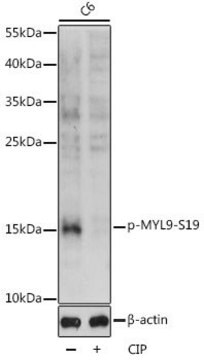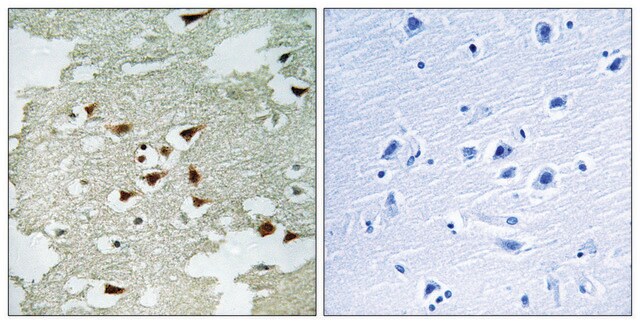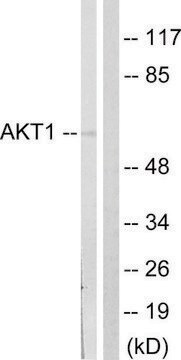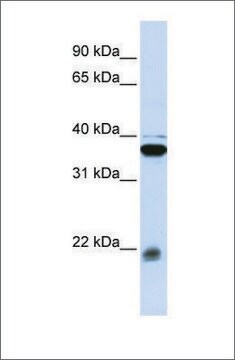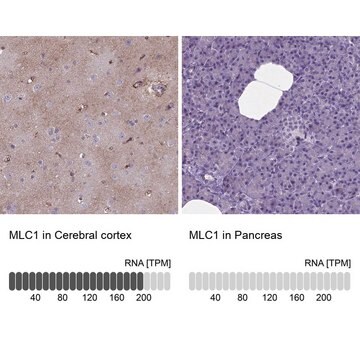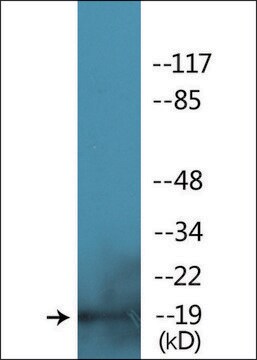詳細
We are committed to bringing you greener alternative products, which adhere to one or more of the 12 Principles of Green Chemistry. This antibody is preservative-free, produced without the harm or sacrifice of animals and exceptionally stable to allow for ambient shipping and storage if needed, and thus aligns with "Waste Prevention", "Designing Safer Chemicals" and "Design for Energy Efficiency".
Click here for more information.
ZooMAb® antibodies represent an entirely new generation of recombinant monoclonal antibodies. Each ZooMAb® antibody is manufactured using our proprietary recombinant expression system, purified to homogeneity, and precisely dispensed to produce robust and highly reproducible lot-to-lot consistency. Only top-performing clones are released for use by researchers. Each antibody is validated for high specificity and affinity across multiple applications, including its most commonly used application. ZooMAb® antibodies are reliably available and ready to ship when you need them.
特異性
Clone 1B16 is a ZooMAb® mouse recombinant monoclonal antibody that specifically detects MLC-2. It targets an epitope within 20 amino acids from the C-terminal half.
免疫原
KLH-conjugated linear peptide corresponding to 20 amino acids from the C-terminal half of human Myosin regulatory light chain 2 (MLC2).
アプリケーション
Quality Control Testing
Evaluated by Western Blotting in fetal Bovine heart endothelial (FBHE) cell lysate.
Western Blotting Analysis: A 1:10,000 dilution of this antibody detected MLC-2 in fetal Bovine heart endothelial (FBHE) cell lysate.
Tested Applications
Immunocytochemistry Analysis (ICC): A 1:100 dilution of this antibody detected MLC-2 in C2C12 cells.
Affinity Binding Assay:: A representative lot of this antibody bound MLC-2 peptide with a KD of 1.5 x 10-6 in an affinity binding assay.
Immunohistochemistry (Paraffin) Analysis (IHC(P)): A 1:1,000 Dilution of this antibody detected MLC-2 in human heart tissue sections.
Note: Actual optimal working dilutions must be determined by end user as specimens, and experimental conditions may vary with the end user.
ターゲットの説明
Myosin regulatory light chain 2, ventricular/cardiac muscle isoform (UniProt: P10916; also known as MLC-2, ; MLC-2v, Cardiac myosin light chain 2, Myosin light chain 2, slow skeletal/ventricular muscle isoform, MLC-2s/v, Ventricular myosin light chain 2) is encoded by the MYL2 (also known as MLC2) gene (Gene ID: 4633) in human. Myosins belong to a family of actin-based motor molecular motors with ATPase activity that is essential for muscle contraction. Myosins form regular bipolar thick filaments that, together with actin thin filaments, constitute the fundamental contractile unit of skeletal and cardiac muscle. Muscle myosin is a hexameric protein that consists of 2 heavy chain subunits (MHC), 2 alkali light chain subunits (MLC) and 2 regulatory light chain subunits (MLC-2). Fast and slow mammalian muscle myosins differ in their heavy chain sequences. Muscles expressing the two isoforms contract at markedly different velocities. MLC-2 is highly expressed in type I muscle fibers and plays a role in heart development and function. It is phosphorylated by myosin light chain kinase 3 (MYLK3) and myosin light chain kinase 2 (MYLK2), which promotes cardiac muscle contraction and function. Following phosphorylation, it plays a role in cross-bridge cycling kinetics and cardiac muscle contraction by increasing myosin lever arm stiffness and promoting myosin head diffusion, as a consequence of the increase in maximum contraction force and calcium sensitivity of contraction force. These events are reported to slow down myosin kinetics and prolong duty cycle resulting that results in cooperative recruitment of myosin to actin binding sites to sustain thin filament activation as a means to fine-tune myofilament Ca2+ sensitivity to force. During cardiogenesis, it plays an early role in cardiac contractility by promoting cardiac myofibril assembly. Mutations in MYL2 gene are known to cause familial hypertrophic cardiomyopathy that is characterized by ventricular hypertrophy, dyspnea, syncope, palpitations, and chest pain. This ZooMAb® recombinant monoclonal antibody, generated by our propriety technology, offers significantly enhanced specificity, affinity, reproducibility, and stability over conventional monoclonals. (Ref.: Manivannan, SN., et al. (2020). PLoS Genet. 16(5); e1008639; Sheikh, F., et al. (2015). Gene. 569(1); 14-20; Iorga, B., et al. (2007). J. Biol. Chem. 282(6); 3559-3570).
物理的形状
Purified recombinant rabbit monoclonal antibody IgG, lyophilized in PBS with 5% Trehalose, normal appearance a coarse or translucent resin. The PBS/trehalose components in the ZooMAb formulation can have the appearance of a semi-solid (bead like gel) after lyophilization. This is a normal phenomenon. Please follow the recommended reconstitution procedure in the data sheet to dissolve the semi-solid, bead-like, gel-appearing material. The resulting antibody solution is completely stable and functional as proven by full functional testing. Contains no biocide or preservatives, such as azide, or any animal by-products. Larger pack sizes provided as multiples of 25 µL.
保管および安定性
Recommend storage of lyophilized product at 2-8°C; Before reconstitution, micro-centrifuge vials briefly to spin down material to bottom of the vial; Reconstitute each vial by adding 25 µL of filtered lab grade water or PBS; Reconstituted antibodies can be stored at 2-8°C, or -20°C for long term storage. Avoid repeated freeze-thaws.
法的情報
ZooMAb is a registered trademark of Merck KGaA, Darmstadt, Germany
免責事項
Unless otherwise stated in our catalog or other company documentation accompanying the product(s), our products are intended for research use only and are not to be used for any other purpose, which includes but is not limited to, unauthorized commercial uses, in vitro diagnostic uses, ex vivo or in vivo therapeutic uses or any type of consumption or application to humans or animals.


